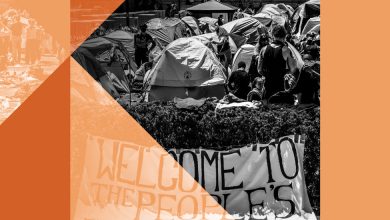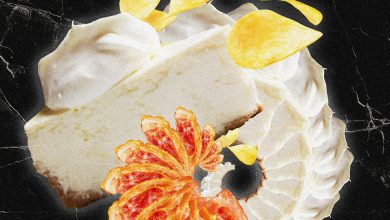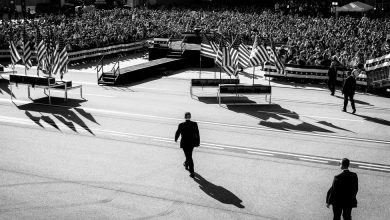Is My Little Library Contributing to the Gentrification of My Black Neighborhood?

About a year ago, I decided to build a library on my front lawn. By library, I mean one of those little free-standing library boxes that dot lawns in bedroom communities around the country — charming, birdhouse-like structures filled with books that invite neighbors and passers-by to take a book, or donate a book, or both.
I’d spotted the phenomenon on walks through upscale, largely white neighborhoods around Los Angeles and immediately resolved to bring it home to Inglewood. Why not? A library is not so much a marker of wealth and whiteness as it is an affirmation of community and cozy, small-town camaraderie that Inglewood, a mostly Black and Latino city in southwestern Los Angeles County, has plenty of. We deserved no less.
Prepandemic, Inglewood was gentrifying, another reason I’d been inspired to do the library: I wanted to signal to my longtime neighbors that we had our own ideas about improvement, and could carry them out in our own way. There are organizations that help people build these little libraries, but I did mine independently. I envisioned it as a place for my neighbors to stay connected during the pandemic. The wooden post on which the library sat was a stake in the ground, literally.
The response to the library was slow at first — it was the first in the area, and some people mistook it for a birdhouse, or a mailbox. But I was pleased to soon see people stopping by to browse and take home books.
Then one morning, glancing out my front window, I saw a young white couple stopped at the library. Instantly, I was flooded with emotions — astonishment, and then resentment, and then astonishment at my resentment. It all converged into a silent scream in my head of, Get off my lawn!
The moment jolted me into realizing some things I’m not especially proud of. I had set out this library for all who lived here, and even for those who didn’t, in theory. I would not want to restrict anyone from looking at it or taking books, based on race or anything else. But while I had seen white newcomers to the neighborhood here and there, the truth was, I hadn’t set it out to appeal to white residents.
Now that they were in front of my house, curious about this new neighborhood attraction, I didn’t know how to feel. By bringing this modern cultural artifact here from white neighborhoods, had I set myself up, set up the neighborhood? Was I contributing to gentrification and sending the wrong message about how I wanted the neighborhood to be?
What I resented was not this specific couple. It was their whiteness, and my feelings of helplessness at not knowing how to maintain the integrity of a Black space that I had created. I was seeing up close how fragile that space can be, how its meaning can be changed in my mind, even by people who have no conscious intention to change it. That library was on my lawn, but for that moment it became theirs. I built it and drove it into the ground because I love books and always have. But I suddenly felt that I could not own even this, something that was clearly and intimately mine.
As the couple wandered on, no books in hand, I thought about how fragile my feeling of being settled is. It didn’t matter that I own my house, as many of my neighbors do. Generations of racism, Jim Crow, disinvestment and redlining have meant that we don’t really control our own spaces. In that moment, I had been overwhelmed by a kind of fear, one that’s connected to the historical reality of Black people being run off the land they lived on, expelled by force, high prices or some whim of white people.
One of the most famous examples of that displacement happened several miles south of Inglewood. Bruce’s Beach, a Black-owned resort, once thrived along the coast of tony Manhattan Beach, until it was seized by eminent domain in 1924 by white city officials. They claimed they needed the land for a public park, but they didn’t build one for more than three decades. It’s clear they simply wanted the bustling holiday and leisure spot and the Black people it attracted gone. That parcel was recently returned to the descendants of Willa and Charles Bruce, who owned it — an extraordinary example of reparation, but an isolated one that still leaves the problem of Black unsettledness intact.
When my uncle, Paul Aubry, bought a house in Los Angeles in the predominantly white, working-class South Central neighborhood of the late 1940s, he wasn’t just buying a house, he was putting his stake in the ground, making his claim to the American ideal of belonging.
My uncle’s claim was rejected. A cross was burned on his lawn. As more Black families moved to the neighborhood, white people moved out in droves. The ground shifted under Uncle Paul’s feet. That white flight forged the chiefly Black and brown South Central of popular imagination and created similar demographics in other city neighborhoods across the country, including Inglewood.
It has to be said that there’s nothing inherently wrong with the Black-, Latino- and immigrant-rich neighborhoods that resulted from those flights. Community has always been our greatest asset, and its greatest source of capital. But now, as younger generations of white people move back to the neighborhoods their parents shunned, in the phenomenon I call “white return,” it all suddenly feels up for grabs — again.
Instead of the blatant racism of what happened at Bruce’s Beach, we now have gentrification. It’s perfectly legal, but ultimately it causes the same racial displacement, on a much larger scale. The stratospheric rise in home prices alone has meant that the Black population of Los Angeles has been declining for decades, and has dropped to around 9 percent.
The anti-gentrification strategy articulated by many of my longtime Black neighbors is this: Stay put. Don’t sell. Stand your ground. While that is possible for some of us (I won’t be selling because, really, where would I go?), it’s not for everyone, and it’s not a permanent solution. It also doesn’t solve the bigger crisis of belonging.
Ultimately, the moment with the couple I saw through my window raised for me a serious moral question about how I should act. Screaming at them to get off my lawn would be adopting the values of the oppressor, as my racial-justice activist father used to say. Yet my resentment was not analogous to the white resentment of generations past (and of now, I’d argue). White resentment has always been legitimized, and reinforced, by legal and cultural dominance, a dynamic evident in everything from the rise of Trumpism to the current battle against the political boogeyman of critical race theory.
My little library, affirming as it is, is also an illusion; it can’t save our neighborhood. Still, in 2021, it has become increasingly important to maintain and grow Black space, on its own terms. As I watched the white couple peruse my little library, the most complicated feeling of all was the brief, bittersweet satisfaction I took in watching them drawn to my lawn, and to my idea. It felt empowering and hopeful on the one hand, defeating on the other.
So what message do I hope they took from my library? The same message I wanted to send to the rest of my neighbors, my community: Black presence has value — in every sense of the word, and on its own terms.
That value should make the casual displacement of Black people untenable, even immoral. And that will take much more than a little library to rectify.
Erin Aubry Kaplan (@aubry_erin) is a journalist and author who has lived in Inglewood, Calif., since 2001.
The Times is committed to publishing a diversity of letters to the editor. We’d like to hear what you think about this or any of our articles. Here are some tips. And here’s our email: [email protected].
Follow The New York Times Opinion section on Facebook, Twitter (@NYTopinion) and Instagram.




